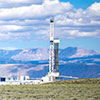
Changing Times Bring Conflict With Surface Owners
By Michael J. Mazzone
HOUSTON–For decades, companies drilling for oil and gas had law and history on their side. Drilling was a noisy, dusty and intrusive business, but it was heard and seen primarily by passing motorists on the United States’ sprawling prairies.
The law was certain and stable. Courts recognized the dominance of those holding mineral rights over surface owners who held deeds in which the mineral estates had been cut away. Courts and regulators also seemed to give a nod to the fact that oil and gas operators worked in the national interest: Their products heated our homes, offices and schools, and powered factories, trucks and cars.
The courts still recognize dominant rights, when reasonably exercised. If an operator holds mineral rights, he fundamentally has the right, under multiple laws and court decisions in many jurisdictions, to bring together workers and equipment to extract oil and gas from his underground estate.
But, as balladeer Bob Dylan wrote in 1964, “The Times They Are a-Changin’”. Dylan had the civil rights movement in mind, but today two powerful forces–the advance of technology and suburban sprawl–are colliding and signaling, once again, that times “are a-changin’.”
For the producer, the change is nothing to fear, but it is important to understand. His colleagues in the legal fraternity have seen lessons for oil and gas emerging clearly in recent years:
- Companies must exercise reasonableness and avoid negligence as they pursue drilling operations, especially in populated areas. The dominance of the mineral estate will not protect the careless driller.
- While the holder of a mineral estate may have dominance over the surface owner above his estate, that dominance doesn’t prevail over neighboring landowners, whose land is not subject to the mineral lease.
- Similarly, mineral estate dominance may not prevail when a government entity becomes involved. And, developments indicate that agencies, especially the U.S. Environmental Protection Agency, are becoming more aggressive.
- Underscoring all this is the changed landscape. Since the oil boom of 1970, the U.S. population has grown from 203 million to 308 million. Homes took over prairies and edged into deserts. The noisy, burly drilling site and the family home often are now cheek-by-jowl.
Changing Landscape
Hydraulic fracturing and horizontal drilling allow natural gas to be extracted from deep shale formations that were written off as economically unrealistic when the domestic oil industry began a decline four decades ago. Modern drilling techniques have made the energy industry one of the most vital, job-creating forces in today’s struggling U.S. economy.
At the same time, litigation is on the rise across suburban north-central Texas, which sits on the Barnett Shale, and in an arc of land across Ohio, Pennsylvania, New York and West Virginia, which comprise the Marcellus Shale.
These areas are at ground zero of the growing legal risk drillers face today. People coming face-to-face with new drilling technology sometimes are overwhelmed. While remarkably effective at reaching remote gas deposits, the hardware can shock the uninitiated.
Someone once said, “For technology to be great, it must be beautiful.” That person probably was thinking about the iPad and not today’s drilling platform. The expectations of today’s suburbanite are different from those of the farmer with whom a driller might have struck a deal while leaning on a fencepost in the 1960s.
Today, litigation is rising in many urban and suburban areas. The names and jurisdictions change, but the story unfolds in virtually the same way: A family owns the surface estate and lives on a tract of land, but does not own the valuable mineral estate beneath it. The mineral owner leases the minerals to an oil and gas company, and wells are drilled on the land or nearby. Transportation and production facilities are constructed.
One day there is peace and quiet. The next day, there is industry. The view from the kitchen window now includes towers, compressors, tanks, pumps, pipelines, trucks and pits. Homeowners raise a howl about contamination, odors, noise and excessive light. Neighbors not only go after the drillers, but they also take up arms against other neighbors.
“Ron Hilliard came back from church one Sunday to find hundreds of plastic $5, $10, $20 and $100 bills hanging on his fence in Flower Mound, Tx., another message from townsfolk angry at him for signing a lucrative natural gas drilling lease for his suburban Dallas property,” the Associated Press reported from North Texas.
Landowner Lawsuits
Asking for injunctions and monetary damages, landowners bring suits complaining of contaminated air, water and soil. Landowners seek retribution for the alleged contamination by asserting gross negligence, trespass and nuisance. They lament that nearby drilling has turned their water either orange or yellow, or that it introduced gray sediment.
Jim and Linda Scoma live in Crowley, Tx. They filed suit on Aug. 11, 2010, against Chesapeake Energy Corp. of Oklahoma City, alleging the company and its subsidiaries stored drilling waste near the Scomas’ property.
“Linda Scoma’s hair turned an orange color from washing her hair with the contaminated well water,” claimed their lawsuit. “Mrs. Scoma . . . has suffered emotional harm and mental anguish from deprivation of enjoyment, loss of peace of mind, annoyance, inconvenience and anxiety about the contaminated well water.”
Surface owners have argued that after drillers arrive, their water tastes and smells bad, and in some cases even becomes flammable. Complaints contain long lists of chemicals alleged to have been found in water wells: benzene, arsenic, lead, iron, potassium, zinc, ethyl benzene, toluene, barium, and even methane gas.
Incredible as it may seem, in at least one case, the plaintiffs alleged assault. On March 16, 2011, Lisa and Robert Parr filed suit against a group of operators and oil field service companies. The Parr’s farmed and raised cattle on 40 acres in Wise County, Tx. The couple said they were forced to witness each other’s decline in health, the death of their animals, and the destruction of their property.
“Due to defendants’ natural gas activities, actions and/or inactions, defendants made physical contact with plaintiffs’ person through defendants’ releases, spills, emissions and discharges of hazardous gases, chemicals and industrial wastes created by defendants, and are liable to plaintiffs for assault,” the Parr’s claimed in their suit.
The Parr case may be only the beginning. Other potential litigants across the country are threatening to sue after suffering nosebleeds and blackouts they believe were caused by nearby oil and gas drilling.
Contamination
What about claims of flaming water? The theory is that fracturing releases methane gas, and the gas migrates to groundwater, finding its way into landowners’ wells. The claim is that methane escapes through home faucets, creating fire hazards. Landowners complain that other chemicals, such as benzene, enter the water supply through ground spills and improper disposal techniques.
Landowners claim that careless treatment of fracture fluids allows chemicals to enter aquifers, water wells and soil. They contend that fumes from diesel-powered engines cause them to inhale large quantities of nitrogen oxides, carbon monoxide and other chemicals. Also, fracturing and drilling create smog and dust, say the landowners.
The claims don’t stop with contamination. Surface owners say odors, pounding and grinding noises, and lights interfere with the use and enjoyment of their property. They believe that production activities are abnormal, out of place, and harm living conditions. As drilling activities occur more often in populous areas, the frequency of nuisance claims also may increase.
Government Actions
Operators also should be on the lookout for lawsuits from government agencies seeking injunctive relief and civil penalties, and asserting claims similar to those of landowners. For example, the town of Dish, Tx., sued a handful of oil and gas companies for trespass, and private and public nuisance.
Dish claimed a compressor station’s releases included substances that “are dangerous, offensive, inconvenient and annoying to (a) person with normal sensibilities in the town of Dish. These substances include toxic hydrocarbons such as benzene, toluene, ethyl benzene and xylene, (which) are condensed at this facility and measurable amounts are emitted from this facility. These substances are not only offensive and unpleasant in odor, but are a serious health consideration to nearby residents. Benzene is a known carcinogen.”
Although Dish appears to be the only municipality with pending litigation at this time, other state and local governments also may sue.
The EPA has crashed the party as well. The EPA’s federal court suit against Range Resources was filed after Range failed to comply with an EPA order that stated the agency had discovered methane, ethane, propane, benzene, toluene and hexane in water wells in Hood County, Tx. Range was ordered to survey all private water wells within 3,000 feet of its drilling tracts and public water wells. Range disputed the claim that it contaminated wells, and the Texas Railroad Commission sided with Range.
All in all, these claims seem to attack every aspect of oil and gas drilling, production and transportation. Landowners do not like trucks, lights, noise, odors, or anything else associated with the activity. Essentially, it seems they want oil companies to get off their land, and to move out of sight and out of mind.
Minerals Dominate
Yet, the law gives mineral estate owners and lessees significant authority to remove minerals. When the mineral estate is severed, the mineral estate is dominant, absent contrary language in deeds. The mineral estate has an implied easement to use the surface in any way that is reasonably necessary for the exploration, drilling, production, transportation and marketing of minerals. With that comes the right to choose locations, construct roads or other necessary infrastructure, to cut down trees, and to use groundwater.
What does that mean for landowners’ claims? It means that unless the operator conducts operations in an unreasonable or negligent manner, or in violation of statutes or leases, the operator can do whatever he needs to extract oil and gas, no matter how much of a nuisance it may cause to surface owners. But there are limits to these rights, so it is necessary to explore boundaries.
First and foremost, a mineral lessee must use the surface reasonably. Excessive use of the mineral estate that goes beyond this implied easement could give rise to a cause of action in trespass or nuisance. The focus of the court’s analysis will be on whether the offending use is “reasonably necessary” to develop the minerals.
This is a broad standard, and it is rare for a court to find that a lessee’s activity was unreasonable. Don’t build more roads than are needed. Don’t take up more land surface, or extract more groundwater than what reasonably can be used.
Courts seem reluctant to find a nuisance caused by noise, odors or light. According to an early Texas case, if a person purchases “premises burdened with the terms of a mineral lease, he is in no position to complain of conditions produced. (The landowner) is further presumed to have known that conditions would arise naturally during the drilling of said well that would make using the premises as a home disagreeable, inconvenient and perhaps dangerous.”
In short, the surface owner should know what he is in for when buying property subject to a severed mineral estate. Drilling is not considered a nuisance per se. Without proof of negligence, breach of contract, or breach of statutory duty, surface owners have a difficult time winning a nuisance claim.
Accommodation Doctrine
One limitation to oil and gas companies’ reasonable use allowance is the accommodation doctrine, which exists in many states, including Texas, Colorado, West Virginia and Arkansas. This doctrine requires companies to accommodate an existing use of the surface estate, if the surface owner can demonstrate:
- The use existed prior to the drilling;
- The use will be substantially impaired; and
- The company’s use is not reasonably necessary because alternatives exist.
Mere inconvenience to the surface owner is not enough. Surface owners, however, have prevailed over operators in cases involving pre-existing sprinkler and irrigation systems.
Despite all the leeway granted to operators, they still must conduct their operations in a non-negligent manner. Companies must fulfill their basic duty to act as reasonable and prudent operators. Negligent operations include:
- Damaging property by operating broken equipment;
- Allowing a saltwater disposal pit to overflow;
- Failing to advise a surface owner in advance of drilling plans, or denying the surface owner a chance to fence livestock; and
- Failing to guard against gas escaping from a well.
How do claims of contamination fare under these rules? Generally, if contamination occurs as a result of unreasonable or negligent use of the surface estate, the operator could be liable for negligence, trespass and nuisance.
The surface owner may have a breach of contract claim if a lease requires the operator to restore land to predrilling condition, and he does not. Operators also need to be cognizant of statutes, rules and regulations, since violating any of those would potentially give rise to regulatory action, penalties, injunctions, or a finding of negligence per se.
Neighboring Property
While operators may have a lot of leeway when it comes to surface owners, the same cannot be said for neighboring properties. An implied easement or similar right to use the surface estate may exist, but there is no implied right to infringe on neighboring property.
In Natural Gas Pipeline Company of America v. Justiss, a Texas court of appeals held that NGPC’s compressor station constituted a nuisance to neighboring properties. When the person complaining is a neighbor or other third party, the operator is not protected by the dominance of the mineral estate over the surface estate. So, even though operators can engage in a reasonable and necessary amount of non-negligent disruption when it comes to surfaces on which they operate, the same cannot be said for neighboring surfaces.
In summary, oil and gas drilling today frequently occurs closer and closer to residential areas. Although fracturing has received most of the media attention, recent litigation focuses on all aspects of oil and gas drilling, production and transportation.
Landowners challenging drillers operating on their land will have a difficult time recovering on any of these claims, however, unless they can demonstrate that operators conducted activities negligently or unreasonably. But the same cannot be said for government entities or neighboring landowners who are not subject to the dominant estate of the operator.
Urban drilling not only is going to be around for the foreseeable future, but also is likely to increase. As a result, litigation most likely will increase as well.

MICHAEL J. MAZZONE is a partner with Haynes and Boone LLP. Based in Houston, he represents energy companies in environmental contamination indemnity and toxic tort cases. Mazzone has been practicing law for 25 years, and has taught trial advocacy at the University of Houston Law Center, and has served as an arbitrator in numerous cases.
For other great articles about exploration, drilling, completions and production, subscribe to The American Oil & Gas Reporter and bookmark www.aogr.com.














